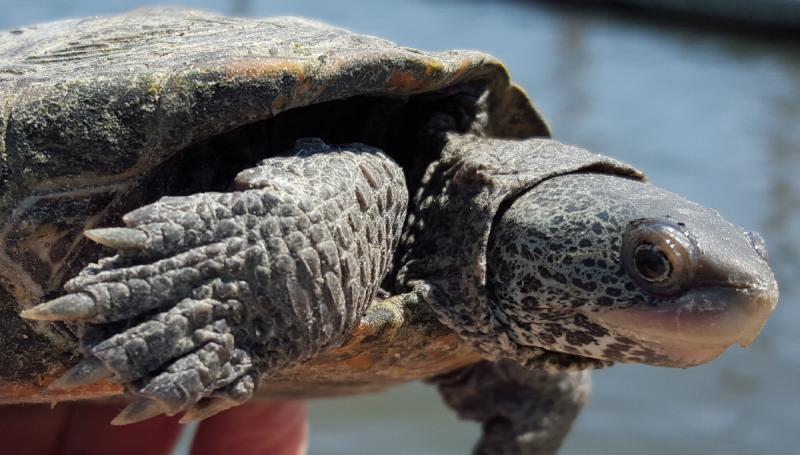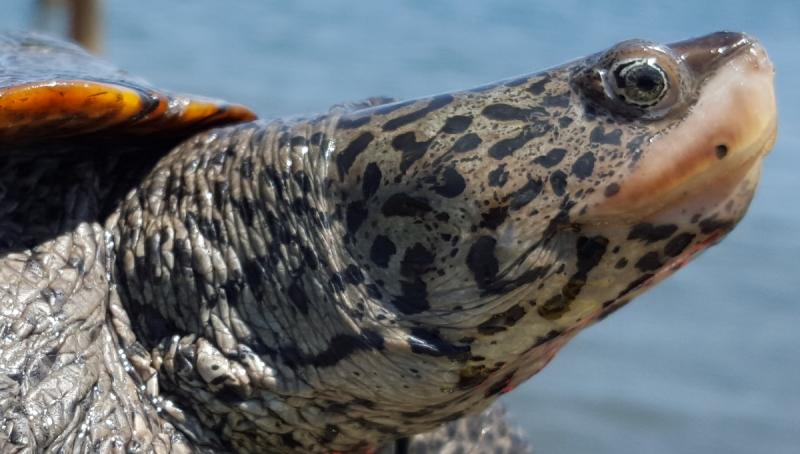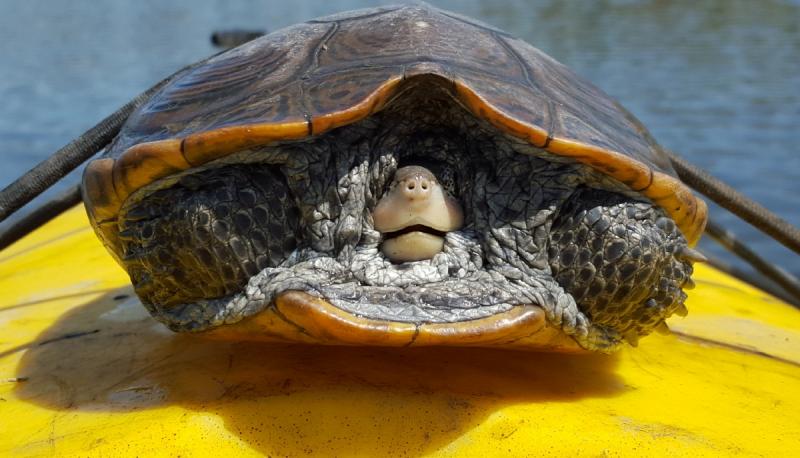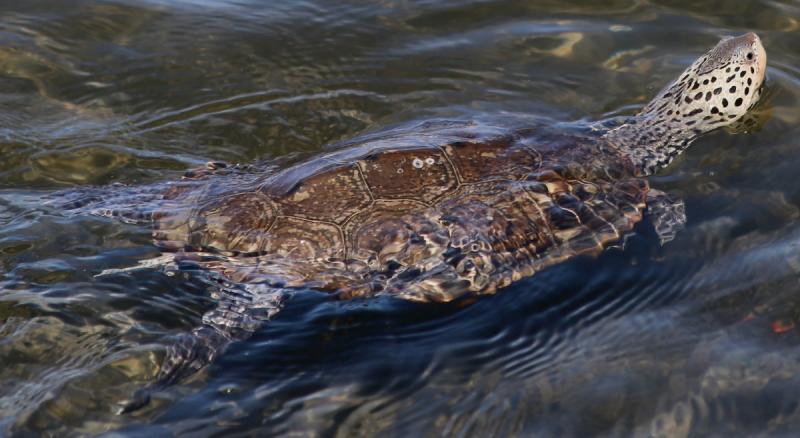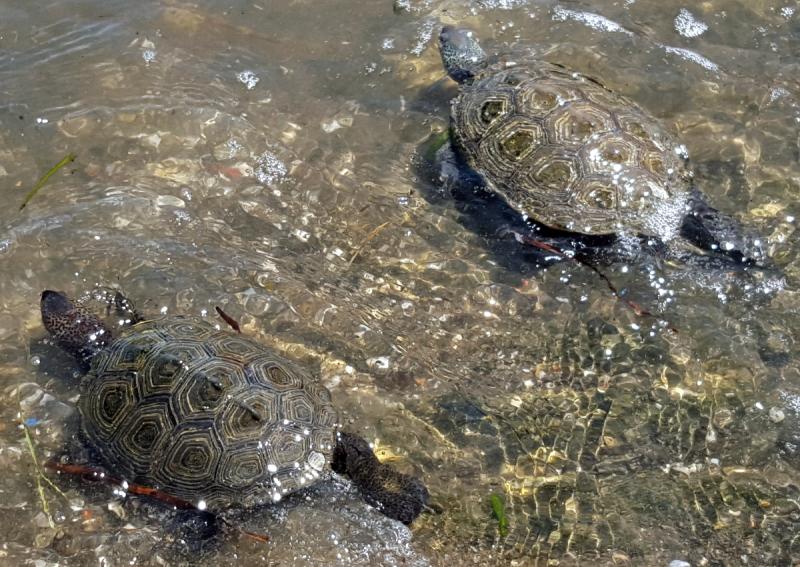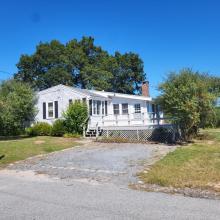Terrapins on the move during mating season
Diamondback terrapins are finding mates all along the South Coast as the annual nesting season for the protected species begins. And Marion’s own “Turtle Guy” is documenting the reptiles’ journey.
Living in the shallow waters of Sippican Harbor and its estuaries, male and female diamondback terrapins are now mating and soon females will emerge from the water to lay eggs.
Known as the Turtle Guy, Don Lewis is the executive director of the Massachusetts Association of Conservation Districts and a turtle expert. Along with his wife, research scientist Sue Wieber Nourse, Lewis studies area turtles and works to preserve several species.
Last month, the couple launched kayaks from Town Landing and found several diamondback terrapins thriving, including one that was rescued from central Massachusetts a year before.
Named “female terrapin #7,” the turtle had been released into Sippican Harbor on July 5, 2014. The couple caught up with the reptile on May 14.
“When we examined her yesterday after a summer and full winter in Buzzards Bay, she proved in great condition, having gained 162 grams (14 percent increase),” Lewis wrote on his blog, "Turtle Journal".
Soon, diamondback terrapins and other local species, such as snapping turtles, will bury eggs in nests all along the coast.
According to Lewis, turtles aren’t known for their motherly instincts.
“They deposit their eggs and go about their business,” Lewis said. “Even alligators are more caring moms than turtles.”
Getting to nesting areas can pose a problem for turtles if a road must be crossed. But there are ways to help.
Lewis advises drivers to be aware while traveling during nesting season, which ends around mid-July.
If a turtle is spotted in a roadway there are tips to help it cross safely:
- Don’t put yourself at risk. When it is safe, pull over to the side of the road and turn on hazard signals.
- Enter the road when safe to do so, approach the terrapin and pick it up by grabbing its shell with both hands between its front and back legs.
- Move the terrapin across the road in the direction it was traveling. The turtle knows which way it wants to go.
- Put the terrapin on dirt or grass at the other end of the road.
Lewis said he is available to help move turtle nests that may be located a less then ideal locations, such as driveways. For more information, call Lewis at 508-274-5108. For more information on area turtles, visit www.turtlejournal.com.



